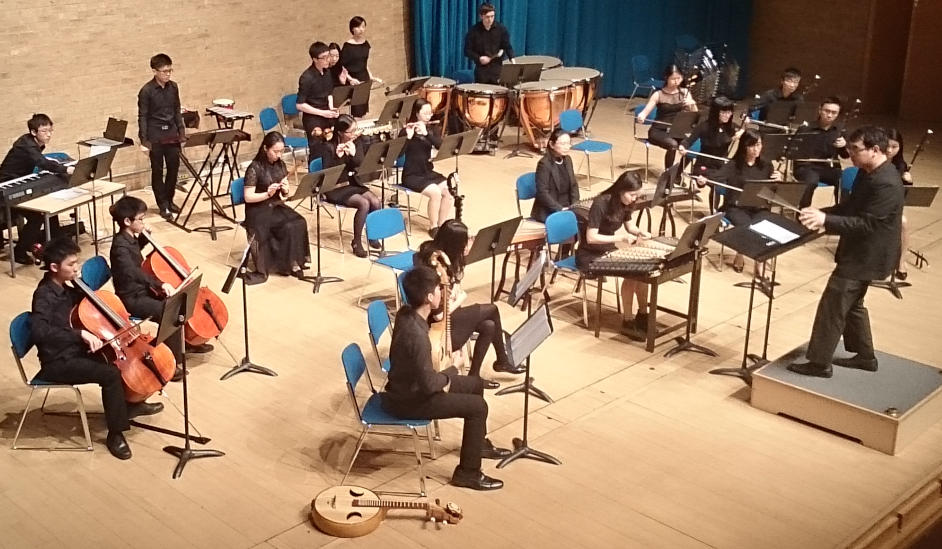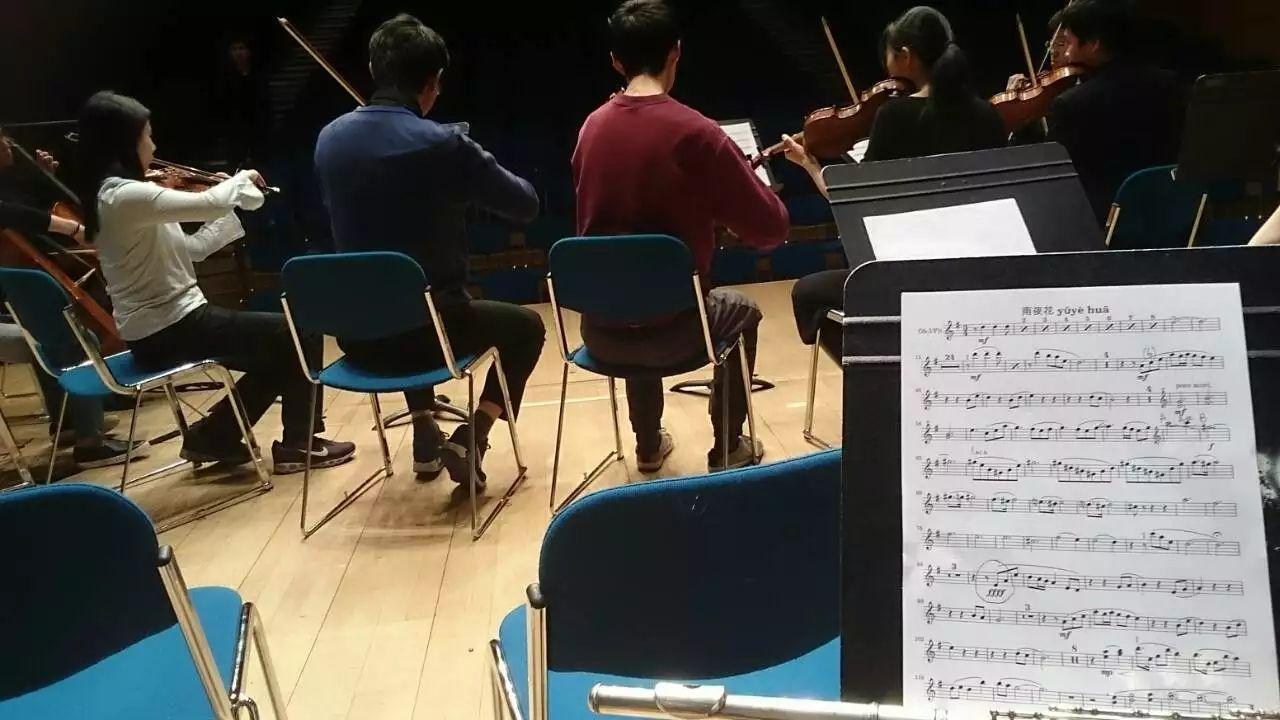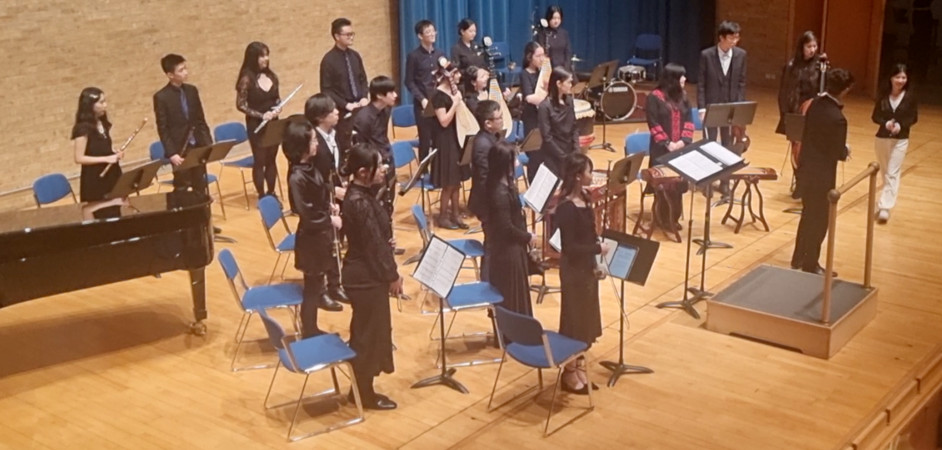Back to Silas S. Brown's home page
Chinese music and CUCOS
In 2002 a Chinese visiting scholar who was returning to China gave me a CD called "The Essence of Traditional Chinese Music (中國民樂大全) vol.3".Details and track list
- The CD is hard to identify in catalogues etc: the Chinese title is generic, the ISRC wasn't found in the online database, the copyright message (with 6 typos in the English) was undated and the disc wasn't recognised by GraceNote before I added it. All we know is it was produced before 2002 by "The Kaiming Culture and Education Music With Image Publishing House" (開明文教音像出版社---the official translation says "Music With Image" but I think a more natural rendition of 音像 is `audiovisual'), which is a government-run publisher set up in 1997.
- The track listing is as follows:
- Pastoral Song 牧歌 (5:08)
- A Gust of Wind 刮地風 (2:39)
- Embroidery Shoes 繡花鞋 (2:51)
- Tune of Anhui 安徽小調 (4:14)
- Counting Flowers 數花 (2:17)
- He Nina 赫尼那 (3:30)
- Pick the Reed Catkins 撥根蘆柴花 (2:47)
- Leading Livestock 趕牲靈 (3:46)
- Tune of Henan 豫調 (3:06)
- Dao Laji 道拉基 (2:42)
- Weaving Cloth For The Dearest One 織花織布送哥穿 (3:10)
- Green High Mountain 高山青 (3:04)
- Tea-Picking Song 采茶歌 (2:02)
- Green Pomegranate 石榴青 (1:54)
Notes on copyright
I did not publish my version of the score, for fear of having perhaps copied modern embellishments that are still under copyright---I'm aware of the fact that I don't know how much modern influence goes into these "traditional" performances, and China joined the Berne copyright convention in 1992---but I didn't worry about copyright in the concert, as the university pays the PRS which has ties with MCSC.I was also due to play my version as a solo at a 2006 charity concert which some students had arranged in aid of a blind school in Vietnam, but the concert ran overtime and they had to cut my item. I did however talk with the other performers, who were mostly Chinese, and I suggested they start a Chinese orchestra but I didn't expect to be taken seriously.
In 2007 they arranged a second concert at which I premiered a couple of my father's flute solos, and they did start a Chinese orchestra, calling it Cambridge University Chinese Orchestra Society (CUCOS), which I've supported since 2008.
CUCOS also collaborated with students from the University of Warwick at Coventry, who set up a small Chinese-instrument ensemble called WCOS from 2011 onwards.
Joint Chinese-Western ensemble
At its inception, CUCOS was divided into a Western Instrument Division and a Chinese Instrument Division (called WID and CID---I suppose not having seen A Touch of Frost in the 1990s they won't have been thinking of Denton CID). The division was made mainly because not many Chinese-music scores are available that include both Chinese instruments and Western instruments---most of the available arrangements are either for a Chinese-instrument ensemble or for a Western-instrument ensemble, not a mixture of the two---so it made sense to have two separate series of rehearsals and separate items on the programme at concerts---a couple of WID pieces, some CID pieces and some solo items and small groups. There have also been CID-only concerts, usually by invitation from other organisations who'd like to have Chinese instruments at an event (most notably the British Museum in 2016). Rehearsals were often scheduled at different times to give multi-talented players the option of playing in both groups, although only a few players did this.
There is no fundamental reason why Western and Chinese instruments cannot play in the same ensemble, as long as the composer/ CUCOS is an "all-comers" amateur orchestra with no auditions---its attraction to Westerners lies in the novelty of the music (and, in the case of CID, the instruments) rather than a professional standard---and it has to cope with the unpredictability of which instruments will be available in which terms. So when my father wrote a piece to unify the two ensembles in 2008/09, he made the instrumentation quite flexible and said feel free to rearrange as necessary. (His piece quoted the Chinese melodies from my earlier arrangement and expanded the textures.)
My father's piece was not played, but it did result in others being more inclined to the idea of performing a joint piece, and:
As for my father's piece, in 2014 he suggested it be reworked and submitted to a Singapore Chinese Orchestra competition he'd seen advertised in a music magazine, but he changed his mind when he heard Singapore is one of the very few countries in the world that still imprisons conscientious objectors---he wasn't religious but he was anti-war. Shortly before his death in 2016 he suggested reworking for a Hong Kong Chinese Orchestra competition, which had published over 2 hours of video explaining their instruments, but we weren't able to process all that information in time.
CID usually uses Jianpu notation---they tend to handwrite it but have occasionally used XunScore, Ziipoo, Xihang's Music Notation app, or my Jianpu in Lilypond script.
Some of the music CUCOS has played has been political etc, and I try to avoid participating in those pieces, but it's not always obvious and I have occasionally been caught out by playing something that I didn't realise had such connections until receiving programme notes after the concert. It's better to remember to 'look up' each piece yourself.
(I've also been known to drop out if they give the whole concert a title that feels uncomfortable---thankfully this isn't every time.)
CUCOS final concerts have sometimes featured soloists from outside Cambridge, either playing separate items (e.g. guzheng player Lin Li from London in 2016 and 2017), or playing a concerto with the orchestra (e.g. harmonicist Jia-Yi He from America in 2009). In 2015 WCOS visited Cambridge as a group and played an item in the CUCOS concert. Most items however have been produced by CUCOS's own members; post-pandemic they've also been joined for some items by a local private ensemble of Chinese parents and children called the Flamingo and Dolphin Orchestra.
The post-lockdown activities of CUCOS have also been all-joint so far: the 2023, 2024 and 2025 concerts each had 1 composition and 5 or 6 full-group arrangements plus smaller arrangements.
Other WID music
As far as flute parts go, the non-joint arrangements that CUCOS WID obtained from Chinese publishers do tend to have the minor annoyances of treating us as extra piccolos (I had to find fingerings above top C), rarely using the nicer-sounding lower register (perhaps because this isn't available on the Chinese dízi flute), and sometimes being printed a bit sloppily and with dozens of ledger lines (usually fused together) when any 'sensible' arranger should have used ottavation (8va). If I can't quickly sort it out with The GIMP then I tend to re-do my part in Lilypond---usually by hammering out the notes in mwr2ly and editing the result, catching any copying mistakes in rehearsal.

You might notice this Lilypond printout of Taiwanese composer Teng Yu-hsien's 1934 song Rainy-night Flower says ``oboe+flute'' on it. They lacked an oboe for the concert so asked me to play passages from both parts, thankfully in time to typeset the combination.Why PhotoScore didn't help
In 2018 the UIS upgraded to Sibelius 8 Ultimate which included "PhotoScore & NotateMe Lite 8" scanning software, but this extra feature did not help. Although it was good at reading pitches, basic durations and tuplets from a scanned part (at least when saved as JPEG with 100% quality: it said "TIFF didn't Open" to PDF and "PhotoScore cannot open compressed .bmp files" to non-compressed BMP), it ignored phrase marks, staccato dots, dynamics, text directions and multibar rests, and during my test it faulted on excessively-steep beams, mistook a small tie for a dot (throwing off the tuplet parsing for a bar) and mistook naturals for flats during a modulation into C Major. If you're reasonably good at typing in music from scratch then you will likely find the task of fixing PhotoScore's read---especially after it's been through musicxml2ly---to be more troublesome than that of simply entering the music yourself.Concert pattern
CUCOS is mostly active in the winter and spring terms, shutting down for the examination term. In their first years they performed at least two concerts per year in different colleges, then in spring 2010 obtained an annual slot at West Road concert hall, and the ensemble as a whole focused on that one concert until a second one was restored in winter 2012. After that they fell into a pattern of two concerts per academic year, the first being a free one in a college (usually Robinson) and the second being ticketed at West Road, which helps raise funds for club instruments (not everyone can bring their own, especially larger instruments). The West Road concert is usually videotaped for players to show to their families in China or wherever---the club is open to everyone, but most players tend to be international students from China, Singapore etc and very few have families living near enough to come to a concert, so they appreciate being able to take home the video file. Sometimes the club is invited to give an additional performance at a large Chinese New Year party (I avoid those).
In 2025/26 it was no longer possible to book West Road in the spring so they played there in December 2025 in a joint concert with a Gamelan society.
Anecdote
In 2012 a Chinese student on a summer English language programme had brought her large guzheng, and she had too much luggage to take back so she wanted to sell the guzheng and buy another back in China. We arranged to buy it for the club, and I stored it in my flat until they returned to Cambridge in the autumn. Before selling it to us, the student had tried a city centre music shop that displayed a sign saying ``if it's musical, it's here!'' They didn't want it. I do like that music shop (they once lent me a piccolo for a concert at the 11th hour), but I had to resist the temptation to walk in and say ``how about a Chinese guzheng---it's musical, why isn't it here?'' They removed that sign shortly afterwards.
Copyright and Trademarks
All material © Silas S. Brown unless otherwise stated.
PhotoScore is a registered trademark of Neuratron Ltd.
Sibelius is a registered trademark of Avid Technology, Inc. or its subsidiaries.
Any other trademarks I mentioned without realising are trademarks of their respective holders.
